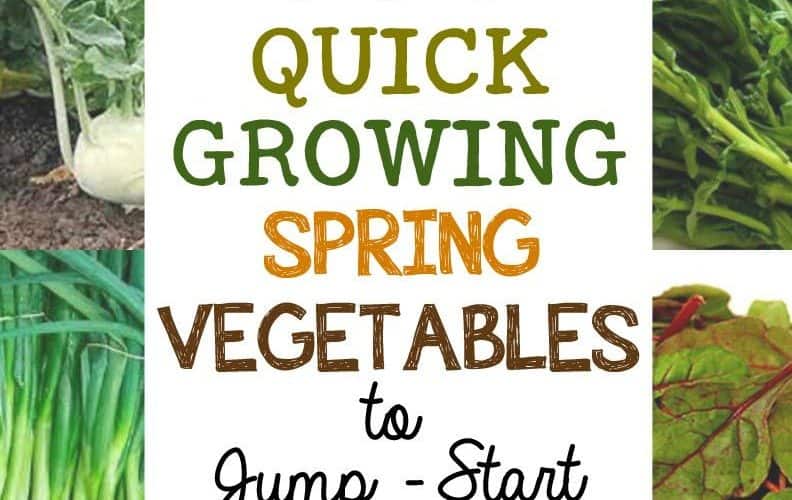Currently, people living in all areas of the country are participating in debates as to what food gardening choices a person living in the United States should have. On one hand, there’s a big push to have everyone become more involved with food production. It’s being proposed that everyone should start producing and sharing food, whether they live in an urban or rural area. On the other hand, FDA, USDA, and city ordinances, as well as housing association restrictions tend to make it illegal or difficult for anyone to do this. This creates a conflict of interest for everyone involved. This debate leaves many people wondering just what their food gardening choices are.
Pro-food gardening
Both sides have made valid points to support their beliefs. Here are some of the facts that support the theory that more food gardening and food sharing is needed:
- There has been a dramatic increase of hunger in the United States and the rest of the world in 2008, 2009 and 2010. Although the U.S. is too proud to directly label it as hunger, there were 17 million households (about one in seven) that were considered to be food insecure in 2008. A household has to have at least one or more members foregoing meals or drastically reducing the amount of food intake due to the lack of money and other food resources. There are no statistics available for 2009, 2010, or 2011 for the United States. However, it has been estimated that there currently are 2 billion people living in poverty and hunger on a global basis.
- In 2009, the poverty rate in the United States increased from 39.8 million to 43.6 million people. This means approximately one out of every five children live in poverty, with almost half of them living in extreme poverty. Extreme poverty is considered to be a household cash income of less than half the poverty line. In 2009, the U.S. poverty line was set at around $11,000 annually for a family of four.
- The cost of living in the U.S. is rapidly increasing, while incomes are decreasing. It’s estimated that 16 million low-income households were living in unaffordable, overcrowded, or substandard housing in 2007. The cost of living is expected to keep rising, along with the cost of fuel, utilities, and healthcare.
- Without a proper diet, people can become extremely ill. This leads to more medical expenses. There were 50.7 million people without any form of health insurance in 2009. This was mostly due to not being able to afford the insurance premiums.
- Food safety is a high priority for everyone. Locally grown food is safer for consumption if raised properly simply because it’s handled and processed less. The farther food is transported and the more it is handled, then the more likely it is to become contaminated with harmful pathogens. Also, many of the food-borne diseases are caused by the way the animals are fed and their poor living conditions. Most of the contaminated produce is due to the way they are processed before packaging and being shipped long distances. Another cause of food-borne related diseases is having untrained workers improperly preparing and storing food.
- Food and water resources are diminishing world-wide due to soil erosion, changing climates, man-made and natural disasters, and farmland encroachment. On top of this, the world’s population increases by approximately 219,000 people each day.
- Due to the poor economy, numerous cuts to funding for food supplemental programs have been made over the past decade. With the increase in hunger and poverty levels and the decrease in funding, many food banks, charities, and other organizations can’t meet the demands of the people. They quickly run out of food reserves, since people can no longer afford to make donations to charities. Many of the people who used to support the programs by volunteering and making donations now have to use the programs themselves for their own survival.
- Everyone wants the government to reduce its spending, and get our country out of debt. If more people produced their own food, the government would not need to provide as much funding for food programs and healthcare as it now does. Nor would the government have to spend as much money on the justice system, as there would be fewer crimes being committed due to poverty and hunger.
- Growing a food garden creates a healthier lifestyle for everyone involved, as it provides the person with better quality food, exercise, emotional-release, stress-release, and improves the person’s physical environment in several ways.
Anti-food gardening arguments
Most of the arguments against having private individuals participate in home-growing food are based on health, environmental, and economic issues too. The primary concerns are:
- Food can easily be contaminated through the growing and processing procedures. The USDA and FDA are already having a difficult time with properly ensuring adequate levels of food safety. Under the current conditions, these agencies are failing to enforce strict regulations due to a shortage of manpower and funds. The USDA and FDA mostly rely on the honor system to enforce the regulations, which frequently leads to contaminated food reaching the supermarkets. The current regulations are already so strict that only very large, corporate-owned food farms, ranches, and food processing plants can meet the FDA and USDA standards. Despite the strict standards, there’s still an estimated 76 million illnesses, 325,000 hospitalizations and 5,000 deaths related to food-borne diseases in the U.S. annually. The USDA, FDA, and CDC are afraid that these incidents would increase if more people grew, consumed, sold, and shared fresh produce and home-processed meats. This fear is mostly generated by the large food-producing corporations that are lobbying Congress to pass laws that would make it illegal for individuals to grow, consume, sell, or share home-grown food, eggs, and home-processed meats.
- It would be costly to revise all the antiquated laws, ordinances, regulations, and city codes that prohibit agricultural activities to be conducted within urban areas. When suburbs first became popular, the housing associations and property management corporations decided it was important for the suburbs to project a certain image of leisurely living. This image included having crisp, neatly manicured lawns and ornamental flower beds. To keep the scenery neat and manicured, all agricultural activities were prohibited. After that, most cities and towns also adopted ordinances and city codes that prohibited agricultural activities within city limits. The urban areas that do permit some agricultural activities within city limits usually require obtaining special permits, which can be quite expensive.
- Numerous people are concerned that people growing food gardens would use chemically-based fertilizers and pesticides which could pollute the soil and city water supplies. They also fear that the chemicals used could harm people and animals, especially children and the elderly.
- Many people think that vegetable gardens would attract pests and create more problems for people with food and plant allergies. .
- Some people think that having a furrowed vegetable garden would make a property unsightly and therefore lower the property values in the area.
- Most urban dwellers think that they don’t have the ability to grow their own food. They’re under the impression that it takes lots of time and money, and that a lot of hard work is involved with gardening. They also seem to think a large space is required, as well as special knowledge.
Food garden options available
Due to the aforementioned factors, the attitudes towards home-growing food are changing, especially in urban areas. About 41 million vegetable gardens were planted in 2009, according to a Gardening Trends Research report. People are finding that food gardening can be quite enjoyable as well as beneficial. Fortunately, there are still many options available for anyone who wants to grow their own food.
People may choose to grow vegetables or herbs in attractive raised-beds. These are usually 4 X8 boxes that are filled with a good potting soil mixture. However, raised beds can be any size you choose to make them. Raised beds are especially ideal for areas with poor soil, and for anyone who has difficulty bending. The location and sturdiness of the bed are the main things to be concerned with. You’ll need to place it somewhere that gets six to eight hours of direct sun each day.
Another option is to grow a container garden. Instead of using a raised bed, the plants are grown in attractive buckets or pots or vases. Container gardens are well suited for small spaces, such as an apartment balcony or backyard patio. They are also ideal for areas with poor soil, and for people who have a hard time bending. There’s also the option of growing vertical gardens. Instead of growing laterally, the plants grow upwards on a trellis or frame. Additionally, flowering food plants, herbs and fruit trees can be used as ornamental accents throughout the yard.
To help make the fruits, vegetables and herbs safer and better tasting, try using organic or natural growing techniques and products. Avoid the chemically-based products, and try to mostly use liquid fertilizers that will soak in right away. Use complimentary planting and good soil to help repel unwanted pests and to promote plant yields. If you have to use pesticides, then select liquid pesticides that are not harmful to children and pets. It really is worth finding out just what your food gardening choices are, whether you live in an urban or rural area.






